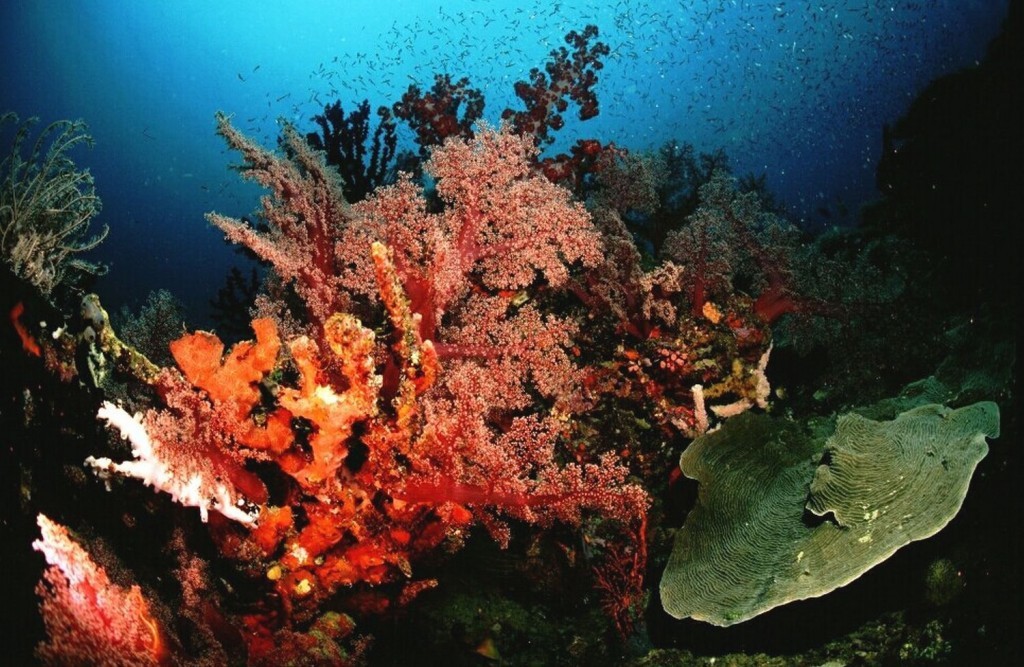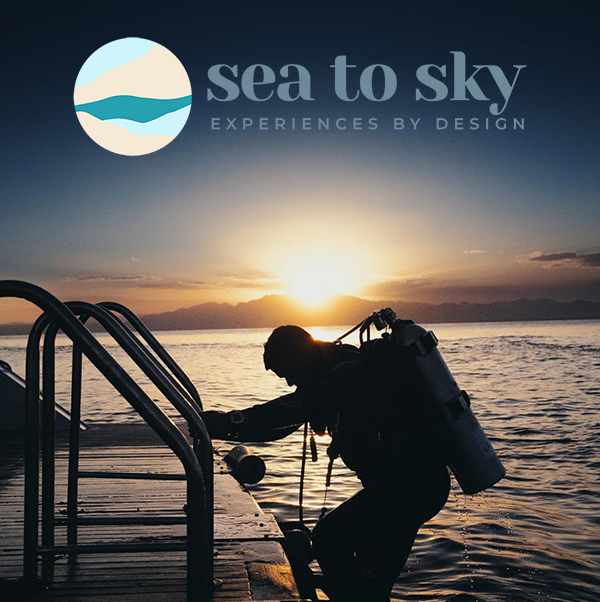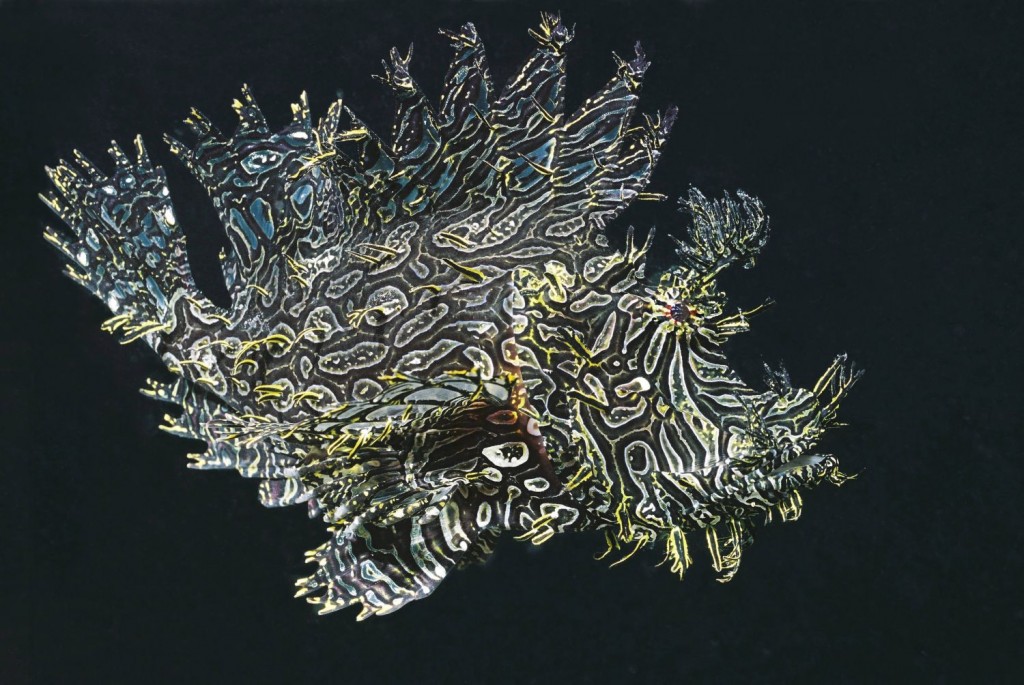The astonishing diversity of Papua New Guinea’s scuba diving is due in large part to its unique location at the meeting point of the Bismarck, Coral and Solomon Seas. Consequently, creatures from three distinct environments come together in Papua New Guinean waters, resulting in an incredible variety of marine life. Boasting twice as many fish species as the Red Sea, and ten times as many coral species as the Caribbean, Papua New Guinea’s underwater world consists of 52,000 square kilometers of reef systems and is truly a place like no other. Deep water channels create sheer coral walls within easy reach of the shore in some areas of the country, while in others, sheltered bays are home to unparalleled reefs made up of some of the biggest coral formations in the world. Rare macro species are found at many of Papua New Guinea’s dive sites, while others are meccas for big pelagics including sharks, turtles and enormous schools of fish. As if that were not enough, the seafloor all around Papua New Guinea is littered with wrecks, the majority of which are World War II casualties including seaplanes, cargo ships, bombers and submarines.
The country is home to an amazing array of well-run resorts, while those wishing to dive four or more times a day should consider one of Papua New Guinea’s many liveaboards. Liveaboards can be a great way to visit as many of the country’s dive sites as possible, of which there are plenty- each one very different to but equally as incredible as the next. In the sheltered environment of Kimbe Bay on New Britain Island, breathtaking marine life thrives against a backdrop of some of the planet’s most impressive coral- including giant soft corals, and hard coral species so large that they sometimes collapse under their own weight. A staggering 70% of Indo-Pacific coral species can be found in the Kimbe Bay area, where land-based and liveaboard diving can be arranged from the beautiful Walindi Resort. New Britain Island is also home to one of the best places for wreck-diving enthusiasts, Rabaul. There, a large number of ships sunk in the World War II battle for the South Pacific have since been transformed into incredible dive sites; other wreck diving hotspots include Kavieng on New Ireland Island and Loloata off New Guinea Island.
Kavieng is also a prime destination for wide-angle photographers and macro photographers alike, where rarely seen critters like the pygmy seahorse and the mimic octopus live side-by-side with bigger species including large numbers of grey reef sharks. In the south of New Guinea, Milne Bay is another macro highlight, offering plenty of muck diving sites that provide the opportunity to spot amazing creatures like ghost pipefish, merlot scorpionfish and panda clownfish. New Guinea Island is also the location for one of Papua New Guinea’s most beautiful dive sites, both above and below the water. Tufi is defined by its deep fjords, which are home to incredible coral, a pair of American World War II wrecks, and a wide variety of juvenile fish. The area is serviced by Tufi Resort, which also offers dives to offshore reefs where scalloped hammerheads, reef mantas and grey reef sharks are all commonly spotted.
Although some areas see strong currents in the channels between islands, Papua New Guinean diving is generally suitable for divers of all qualifications. With balmy sea temperatures ranging between 79-87 degrees Fahrenheit, and excellent visibility of up to 150 feet, Papua New Guinea boasts the perfect conditions for first-time divers and experienced divers alike. Diving is possible year round, with the best seasons running from April to June, and from September to December.







